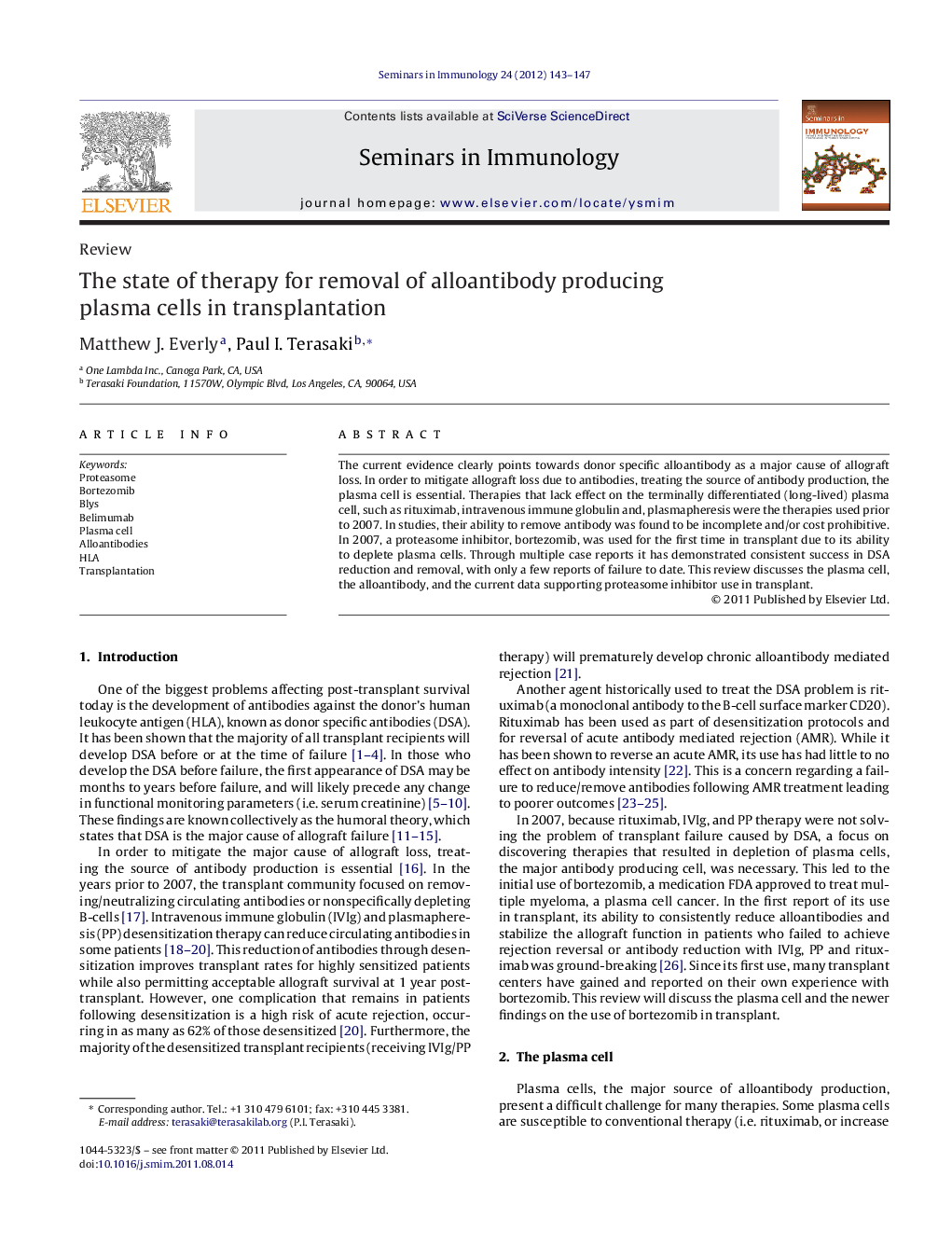| کد مقاله | کد نشریه | سال انتشار | مقاله انگلیسی | نسخه تمام متن |
|---|---|---|---|---|
| 3391564 | 1221059 | 2012 | 5 صفحه PDF | دانلود رایگان |

The current evidence clearly points towards donor specific alloantibody as a major cause of allograft loss. In order to mitigate allograft loss due to antibodies, treating the source of antibody production, the plasma cell is essential. Therapies that lack effect on the terminally differentiated (long-lived) plasma cell, such as rituximab, intravenous immune globulin and, plasmapheresis were the therapies used prior to 2007. In studies, their ability to remove antibody was found to be incomplete and/or cost prohibitive. In 2007, a proteasome inhibitor, bortezomib, was used for the first time in transplant due to its ability to deplete plasma cells. Through multiple case reports it has demonstrated consistent success in DSA reduction and removal, with only a few reports of failure to date. This review discusses the plasma cell, the alloantibody, and the current data supporting proteasome inhibitor use in transplant.
► DSA is a major cause of allograft loss.
► The long-lived plasma cells are the major source of donor specific alloantibody production.
► Proteasome inhibition is a novel therapy capable of depleting DSA producing plasma cells.
► Many centers have used proteasome inhibition to reduce DSA intensity in the settings of pre-transplant desensitization, antibody mediated rejection, and chronic rejection.
► Other therapies such as anti-Blys therapy, belimumab, may have a role in DSA reduction.
Journal: Seminars in Immunology - Volume 24, Issue 2, April 2012, Pages 143–147